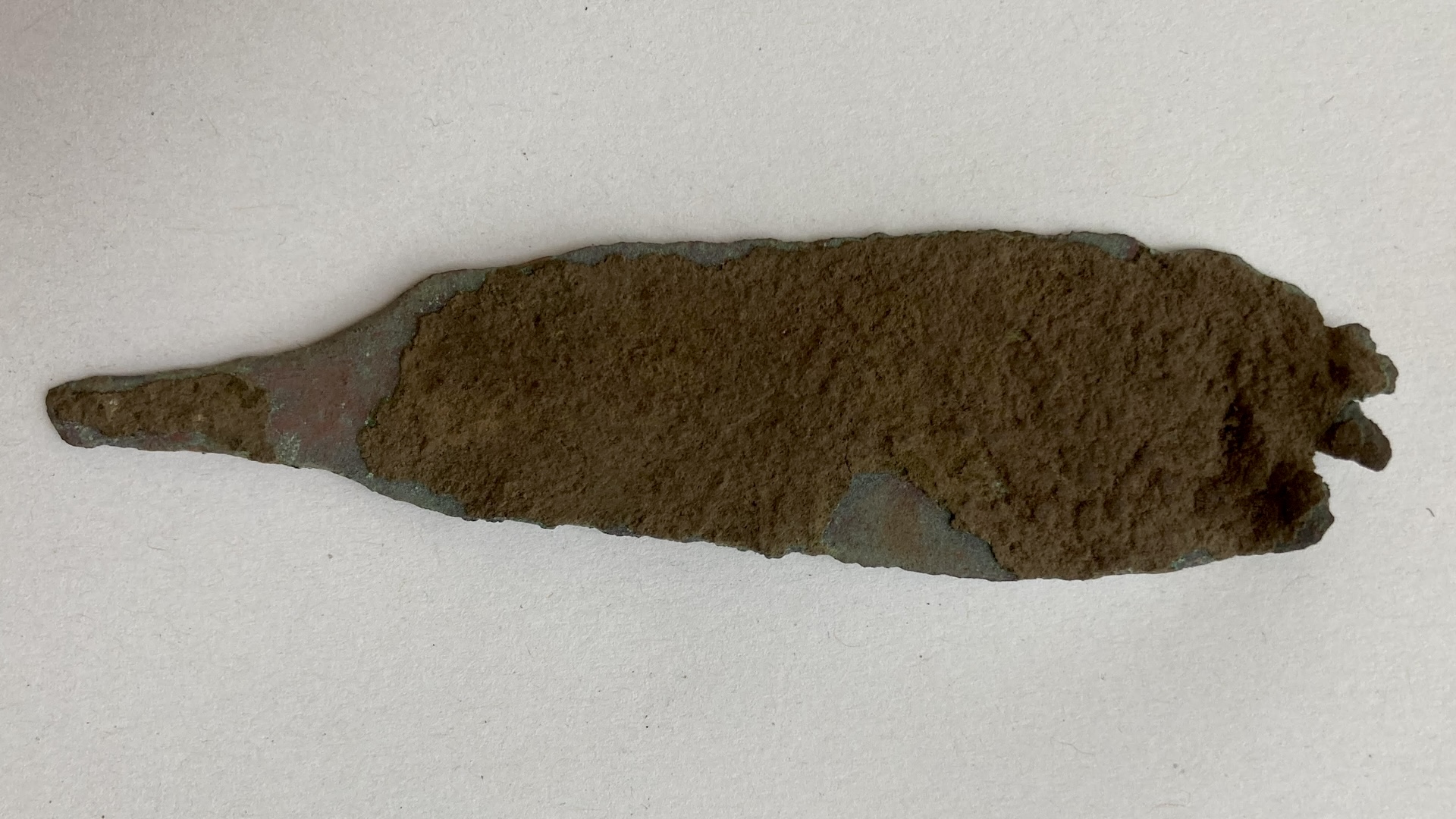
Archaeologists have unearthed a 4,000-year-old copper dagger and fragments of human skulls deep in a cave in Italy. The cave was clearly used for burials, but it also holds the remains of an ancient hearth.
"The moment we discovered the dagger was unforgettable," Federico Bernardini, an archaeologist at Ca' Foscari University in Venice, told Live Science. "We could hardly believe it — finding metal artifacts, especially a dagger, was completely unexpected in this context."
Burials in caves or rock shelters were common in this region at this time, between 4,500 and 4,000 years ago, during the late Copper Age (2750 to 2200 B.C.) and early Bronze Age (2200 to 950 B.C.). But the dagger discovery was unexpected because such rare finds from these periods are usually at places of worship, said Bernardini, who is leading the dig for the university in partnership with other Italian and Slovenian institutions and authorities.
"As we carefully removed the final layers of soil, a flash of copper caught our attention," Bernardini said in an email, adding that they immediately recognized the significance of the finding.
Related: 8-year-old girl unearths Stone Age dagger by her school in Norway
The dagger is one of several artifacts unearthed in Tina Jama Cave, in the "Karst Plateau" of exposed and heavily weathered limestone along Italy's northeast border with Slovenia. Along with other finds from the cave, the dagger is helping to pinpoint the age and technological skills of the different groups of people who occupied the cave at various times between 9,000 and 4,000 years ago.
"The investigations are still ongoing, but they are allowing us to gather valuable data to reconstruct the area's prehistory," Bernardini said.

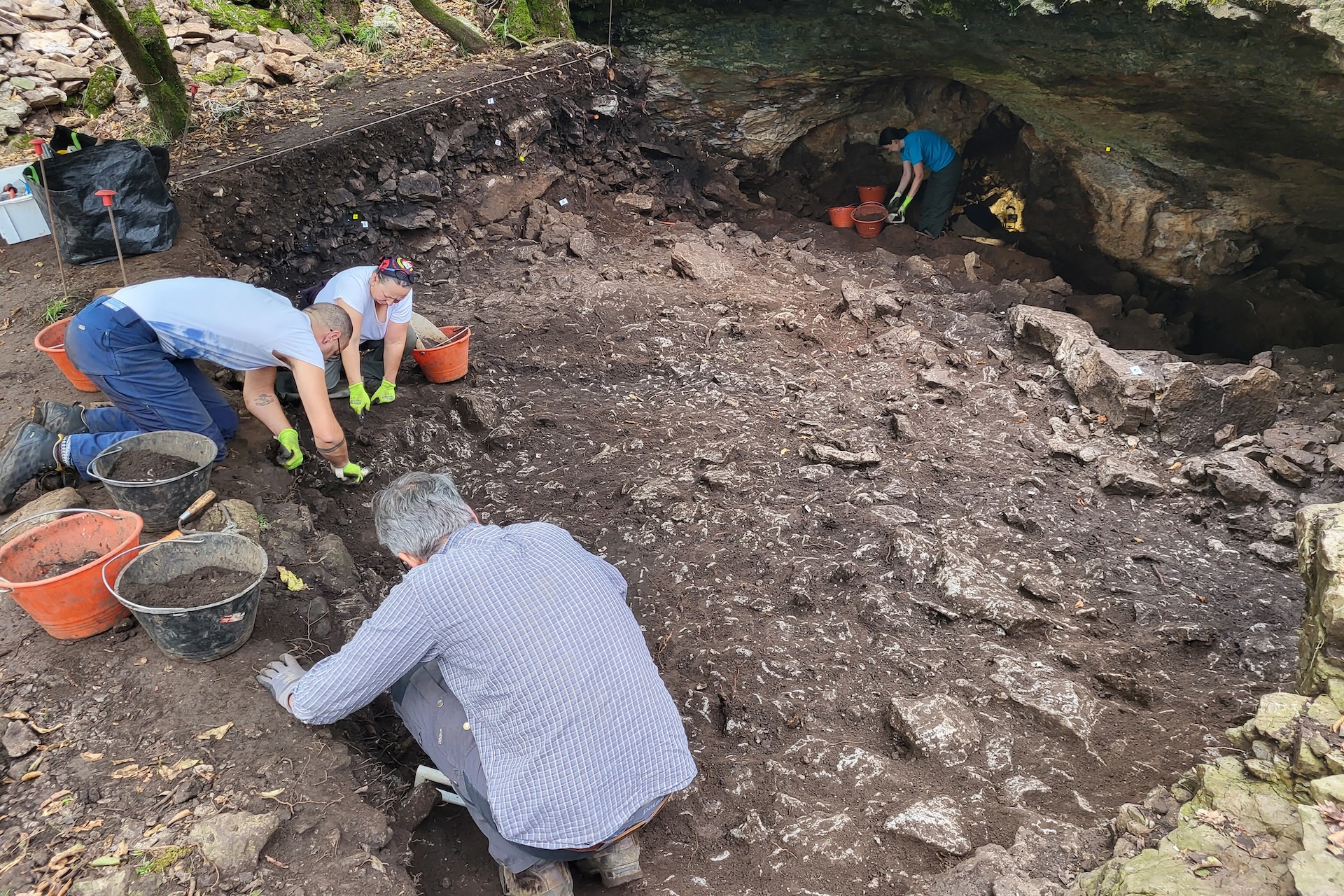
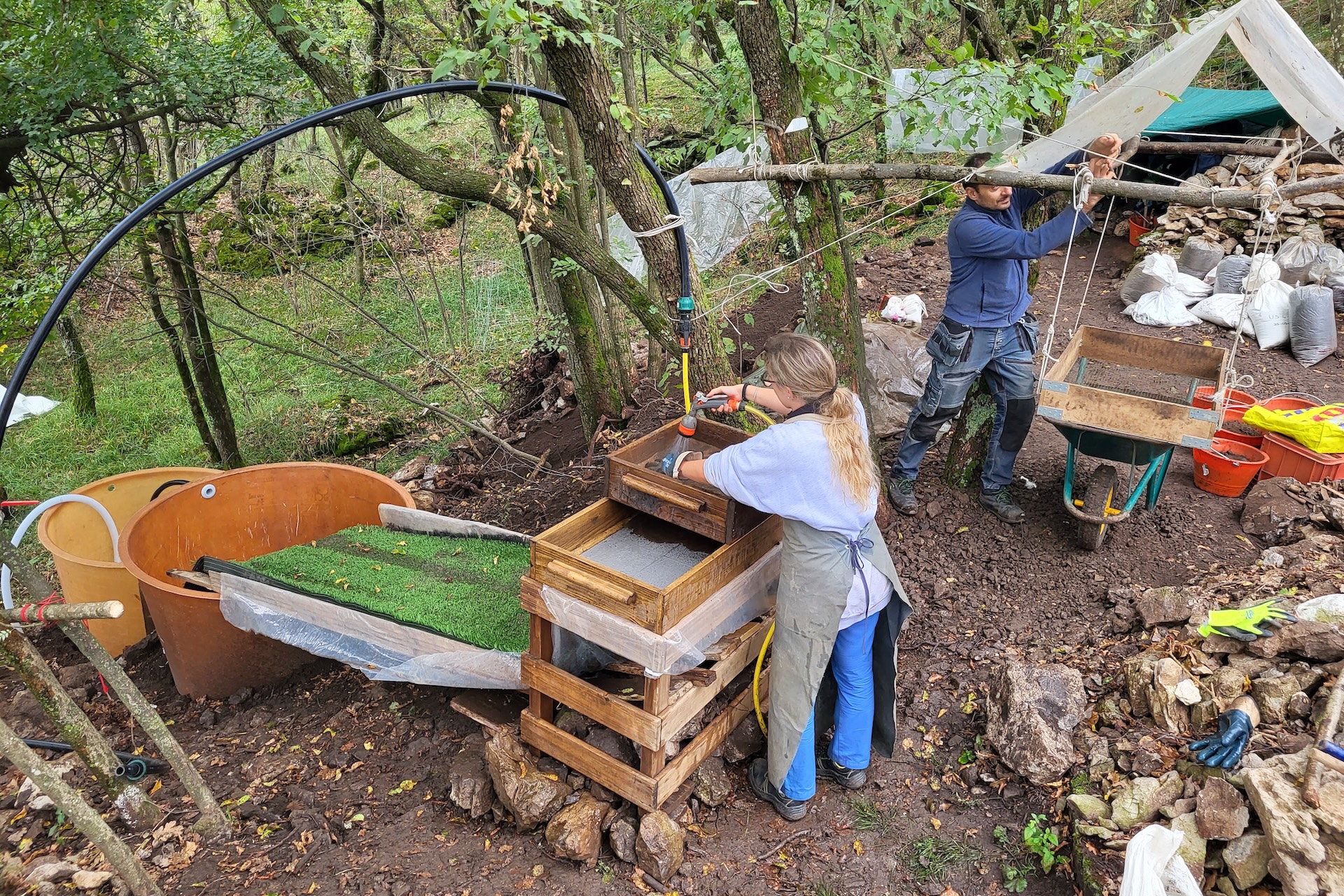
Ancient cave
According to a translated statement from the university, the excavations have revealed layers from the final stages of the Copper Age and the beginning of the Bronze Age, before the secret of adding tin to copper to make bronze was known.
In particular, the finds from the second half of the third millennium B.C. are "crucial for understanding the technological, cultural, and social transformations of Europe at that time," Elena Leghissa, an archaeologist with the Slovenian Academy of Sciences and Arts who is leading the Slovenian team, said in the statement.
The archaeologists are "employing a rigorous methodological approach" while excavating the cave, Bernardini said, including the use of "structure-from-motion photogrammetry" to create virtual 3D maps from two-dimensional images.
In addition, "the soil is carefully sieved with a 1mm mesh to collect as much information as possible," he said.
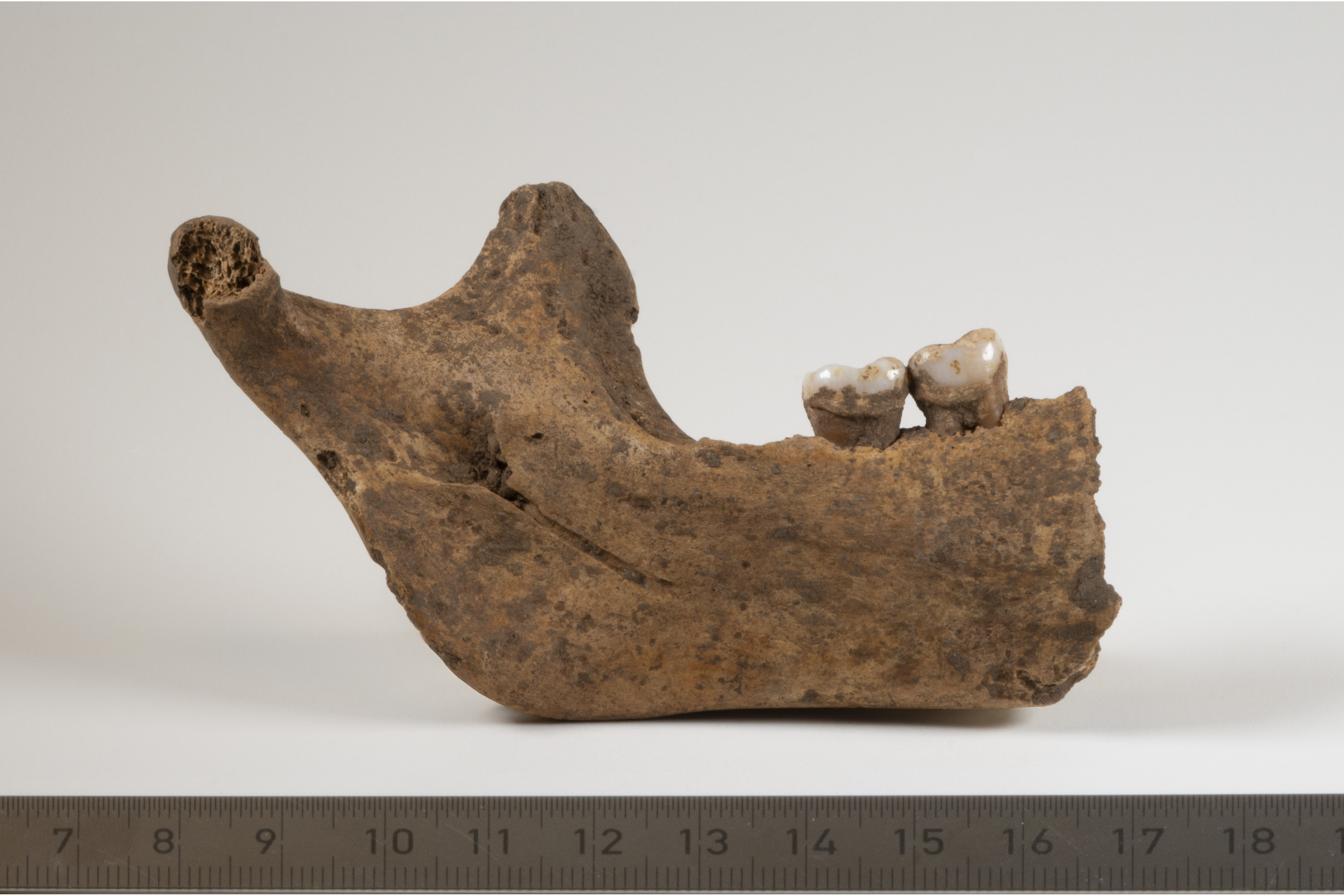
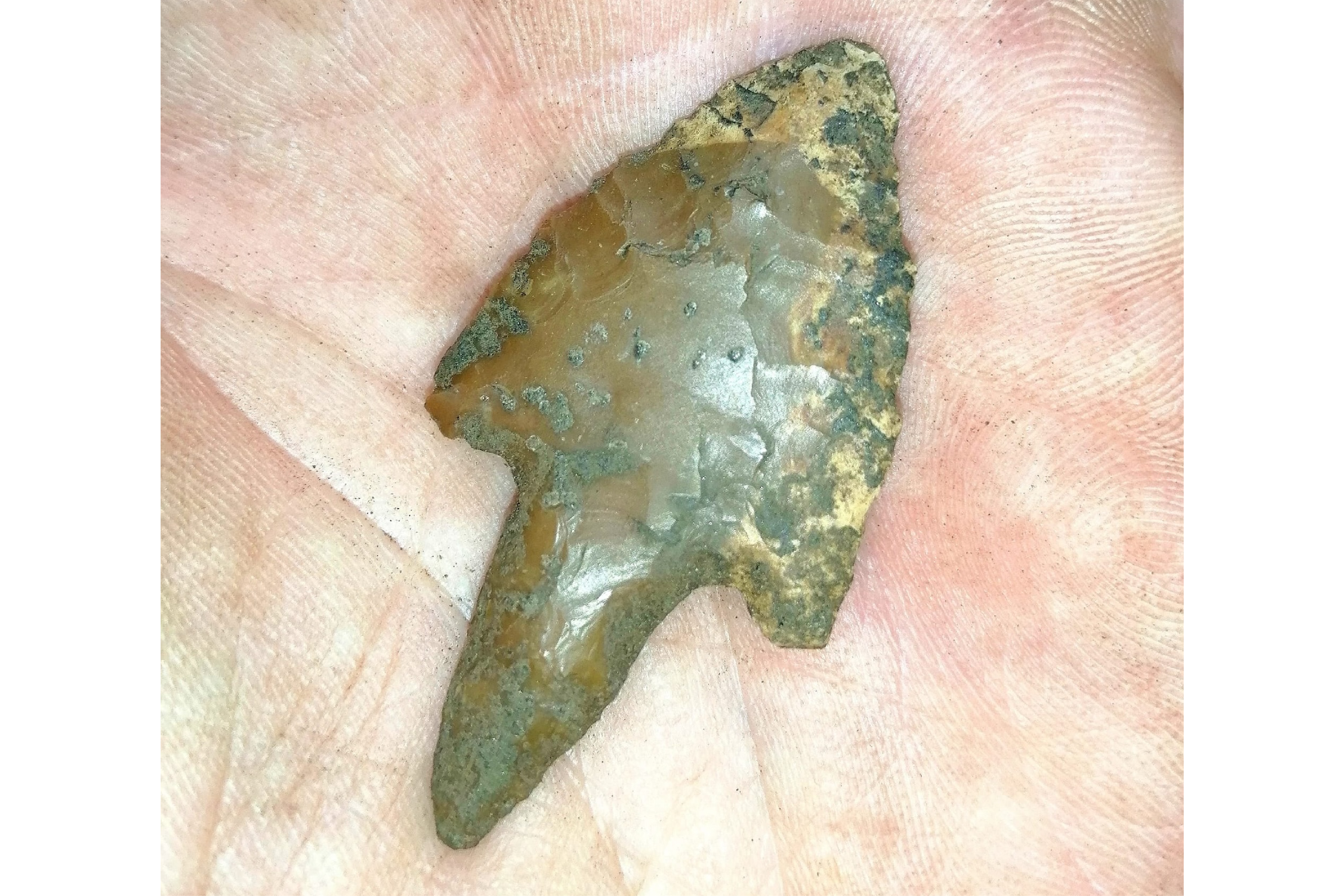
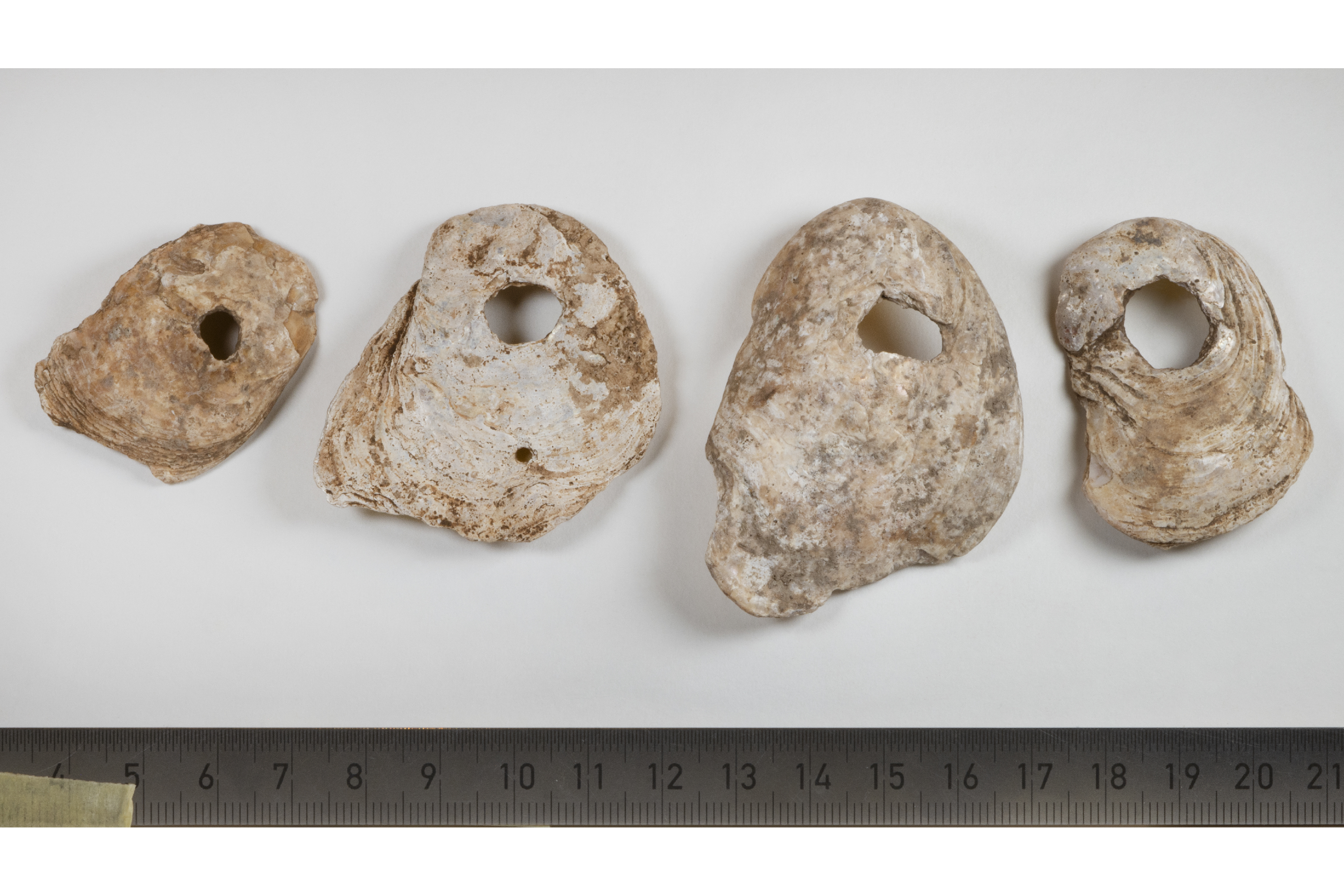
Mysterious stones
One of the strangest features of Tina Jama Cave is a structure that closed the entrance with stone slabs and blocks. It is thought to date to between 2000 and 1500 B.C., or up to 500 years after the dagger was placed there.
The structure's purpose is unknown, and it may have been constructed to shelter the cave's interior from the strong and cold "bora" wind that blows in this region from the northeast every winter. But the archaeologists also think it may have been related to burials in the cave, because pieces of human skulls have been found nearby.
"The skull fragments indicate that the cave was used as a burial place at certain times, though we need to wait for radiocarbon dating to better understand their chronology and possible connection with the stone structure," Bernardini said.
The excavations have also revealed a "hearth" or fireplace that seems to be older than the stone structure at the cave's entrance. It suggests that, "prior to the construction of the stone structure, groups of people used the cave entrance," Bernardini said. "Based on part three findings, these groups seem to be associated with the Cetina culture from the Dalmatian region in modern-day Croatia," an early Bronze Age people, he told Live Science.







